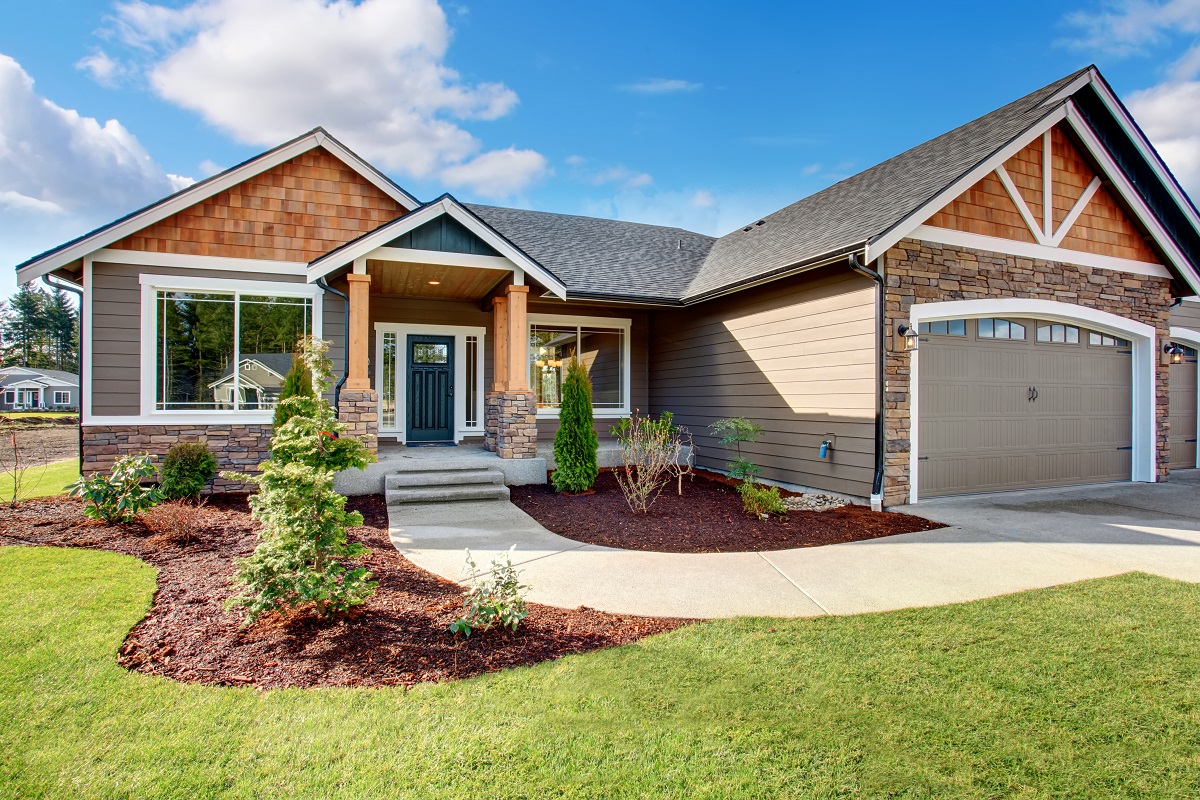


Find out how capital gains tax affects your home sale and learn strategies to minimize your tax burden. Make informed decisions for maximum profit.

Many Americans consider their owned homes (and the home equity held in them) to be their most valuable financial asset.1 When this asset is sold, however, and its true value is realized, some homeowners may find themselves being penalized by the capital gains tax, which can erode away at this hard-earned home equity while taking substantial wealth with it. If you're exploring how to get more money for your house, understanding these tax implications can help you better prepare for a profitable sale.
How does the capital gains tax work, and what is the capital gains tax on a home sale? Read on as we explore capital gains taxes on selling a house and some ways you may be able to lower your liability.
Simply put, capital gains tax is the price you pay to sell an investment asset for a profit, such as a stock or bond, a valuable collectible, or a piece of real estate.
When an asset is in your possession, it can see a virtually infinite increase in value with no capital gains tax implications because it’s what the IRS calls an unrealized gain. As soon as you sell this asset and the gain is realized, capital gains tax comes into play. How much you’re taxed will depend on a number of factors, including:
Assets held for less than a year are subject to short-term capital gains tax, which is in step with the typical income tax rate. Assets held for a year or more fall under long-term capital gains tax. As a standard, the long-term capital gains tax rate is either 0 percent, 15 percent, or 20 percent, depending on your tax-year income.
For the 2025 tax year, single filers earning under $48,350 pay 0 percent; 15 percent if they earn between $48,351 and $533,400; and 20 percent above $533,401. For married taxpayers filing jointly, these numbers jump to $96,700, $96,701 to $600,050, and $600,051+, respectively.2
While capital gains tax applies to home sales just as with other investments, there are major differences in how much profit is taxable by the IRS. For exempted single-filing taxpayers, only profit above $250,000 is taxed. This number jumps to $500,000 for joint-filing taxpayers.
If you bought your home for $200,000 and sold it a year later for $350,000, you would not be held liable for capital gains tax, whether you filed your taxes single or jointly. But if you’re a single filer and your home’s value shot to $500,000, you would be taxed at your corresponding rate for every dollar over the exempted $250,000.
If you plan on selling your home soon or have already, fear not! Certain exemptions and qualifications may reduce or eliminate your capital gains tax on a home sale.
As the name suggests, the primary residence exclusion positively impacts taxpayers for whom the home they’re selling is their main place of residence. If you qualify for this tax exclusion, you’re eligible for the above exemption: No capital gains tax on the first $250,000 of profit for single taxpayers and $500,000 for joint filers. If not, you may be fully tax-liable.
Those who only own one home should have no trouble proving that their property is their primary residence. For those who own multiple homes, establishing your primary residence will require you to prove that you’ve owned your home and lived in it for a set amount of time.
Enter: the two-in-five rule. To qualify for the primary residence exclusion in the eyes of the IRS, you must have owned the home in question for at least a year at the time of selling and lived primarily in the home for two or more of the past five years. It can be a bit confusing and is worth discussing with a qualified tax professional. However, passing this test means proving that your home is, in fact, your primary residence and may secure your (very valuable) eligibility for the primary residence exclusion.3
Crunching the numbers to determine your total capital gains tax liability is relatively easy. With that said, it does require you to work with more variables than calculating your regular tax liability would. How long you’ve owned the home and whether it’s your primary residence, how much taxable income you earn, your filing status, and how much profit you stand to net will all contribute to your total capital gains tax liability.
Let’s say you’re a single filer in a place without state income tax, earning the national average salary of around $64,000. Disregarding any other deductions, this would land you in the middle capital gains tax bracket of 15 percent. You sell your primary residence, which you bought for $150,000, for $450,000, realizing a $300,000 profit.
Because you meet the ownership and use conditions, the first $250,000 of this is exempt. But on the remaining $50,000, your capital gains tax liability would be $7,500. Without the exemption, this figure would be closer to $45,000, making it absolutely vital to take advantage of these exemptions if and whenever possible.4
Whether you meet the requirements for exemption or not, there are additional ways to reduce your capital gains tax burden. Consider these money-saving strategies:
In the example above, qualifying versus not qualifying for the primary residence exemption made nearly a $40,000 difference when it came to capital gains tax liability. If you’re on the cusp of meeting this criteria or in a situation where you can wait to sell your home for the sake of satisfying this requirement, it may benefit you to do so. This may mean holding onto your property a while longer, or moving back in for the time required to establish primary residency.
As any homeowner can attest, the cost of major home improvement projects during the time of ownership can grow quite costly. While you can’t deduct the cost of annual renovations when it comes time to do your taxes, you can deduct these from your total profit when you decide to sell.
No, you can’t write off every lightbulb you replaced during the time you owned your home. But you can write off things like roof repairs and replacement, additions like new bedrooms or bathrooms, built-in appliances, and other costly home improvement upgrades. Line by line, these items lower your reported profit and, therefore, your capital gains tax liability, potentially saving you tens of thousands of dollars when you sell your home. It turns out there’s a prize for holding on to old receipts, after all.
Whether you’re expecting it or not, getting hit by a capital gains tax bill can slow your momentum significantly, making it harder to go confidently into the process of buying a new home after selling your existing one. Add buyer and seller closing costs to the mix, and this can present a clear hurdle.
Truehold’s sell and stay transaction may be able to help.
With Truehold, you can sell your home and cash in on your home equity, then continue living in the home as a renter.* Rather than paying for two sets of closing costs back to back, you can bide your time and develop a strategy, leveraging every tool at your disposal to reduce your capital gains tax liability when tax season rolls around. That way, should the time come that you’re ready to move into your next place, you can do so with your best foot forward.
Connect with one of our representatives today to see how Truehold’s sell and stay transaction can help you unlock your home equity and navigate the road ahead. Find out if this approach is right for you and get an offer on your home.
Disclaimer*: After the home sale, you must comply with the terms of your lease to continue living in the home. This includes making timely payments on your rent for your minimum lease term (which ranges from 6 – 24 months).
Sources:
Chat with a real person & get an offer for your home within 48 hours.
Call (314) 353-9757